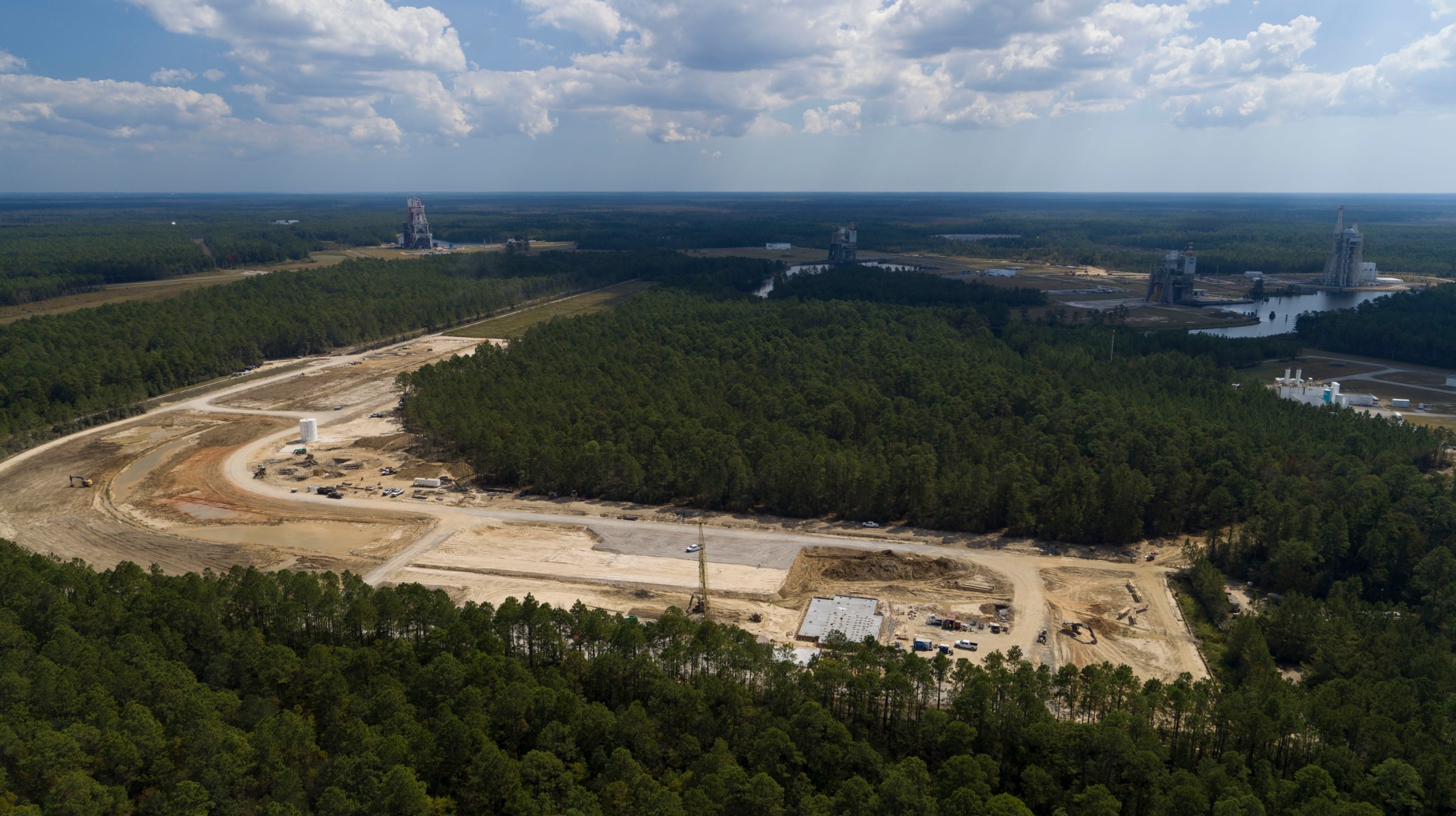
NASA’s Stennis Space Center joined with Relativity Space on Oct. 18 as the company outlined plans for a major expansion of its rocket and engine test facilities at the south Mississippi site.
Relativity Space plans to build comprehensive facilities in the Stennis Test Complex to test its Aeon R engines. The company envisions the completed project as one of the largest commercial test facilities in the nation.
The Mississippi Development Authority is working with Relativity Space to assist with the project. Stennis, located near Bay St. Louis, Mississippi, will provide a range of site services as part of the partnership agreement.
“This expanded partnership is a testament to Stennis expertise and standing as the nation’s premier rocket propulsion test site,” Center Director Dr. Rick Gilbrech said. “Relativity Space continues to grow as an aerospace company, and Stennis is pleased to support its continued development. Working with them for the past four years, Relativity Space has become a valued member of the Stennis federal city.”
Relativity Space already is clearing ground for construction of several new facilities. Company plans call for construction of new engine test stands, office buildings, and a vehicle facility. The company already is housed in several other locations within the Stennis test complex. It also has existing agreements to test its engines and rocket components on various Stennis test stands.
“This announcement is the latest step in an ongoing relationship with Relativity Space,” said Duane Armstrong, manager of the Stennis Strategic Business Development Office. “Stennis has worked with Relativity Space for several years to assist with the development and testing of its Aeon engines. The new expansion at Stennis is another demonstration of the value of the assets and expertise the center offers emerging aerospace companies. We look forward to working with Relativity Space as it continues to grow and pursue its space goals.”
Relativity Space originally partnered with Stennis to test its Aeon 1 engine on the site’s E-3 Test Stand. The partnership quickly expanded in 2018 to grant Relativity Space exclusive use of the E-4 Test Complex at Stennis.
The latest partnership agreement focuses on 153 acres located near the E-4 Test Complex and provides the company room to grow its operations for Terran R, its fully reusable, entirely 3D-printed launch vehicle.
Relativity Space, based in Long Beach, California, has created a 3D-printed, expendable Terran 1 rocket scheduled for its maiden launch in upcoming months. The company also is developing a fully reusable, 3D-printed Terran R rocket. The Terran 1 rocket will be capable of carrying small satellite payloads. The Terran R rocket is being developed to launch payloads up to 44,000 pounds (20,000 kilograms) to low-Earth orbit.
In both instances, the company is using 3D printing and other state-of-the-art techniques, including machine learning and autonomous robotics, to develop rockets with 100 times fewer parts. It already has developed the largest metal 3D printers in the world and anticipates the production process will enable rockets to be created within 60 days.
The Terran 1 rocket will be powered at launch by nine Aeon 1 engines, each capable of producing 23,000 pounds of sea-level thrust. The Terran R rocket will use Aeon R engines, each producing 250,000 pounds of thrust during launch. Both rockets will use a single Aeon Vac engine for second stage propulsion.
The Aeon engines are powered by liquid natural gas and liquid oxygen. Relativity Space already has conducted 2,000+ hot fire tests at Stennis for their development.
C. Lacy Thompson
Stennis Space Center, Bay St. Louis, Mississippi
228-363-5499
calvin.l.thompson@nasa.gov























